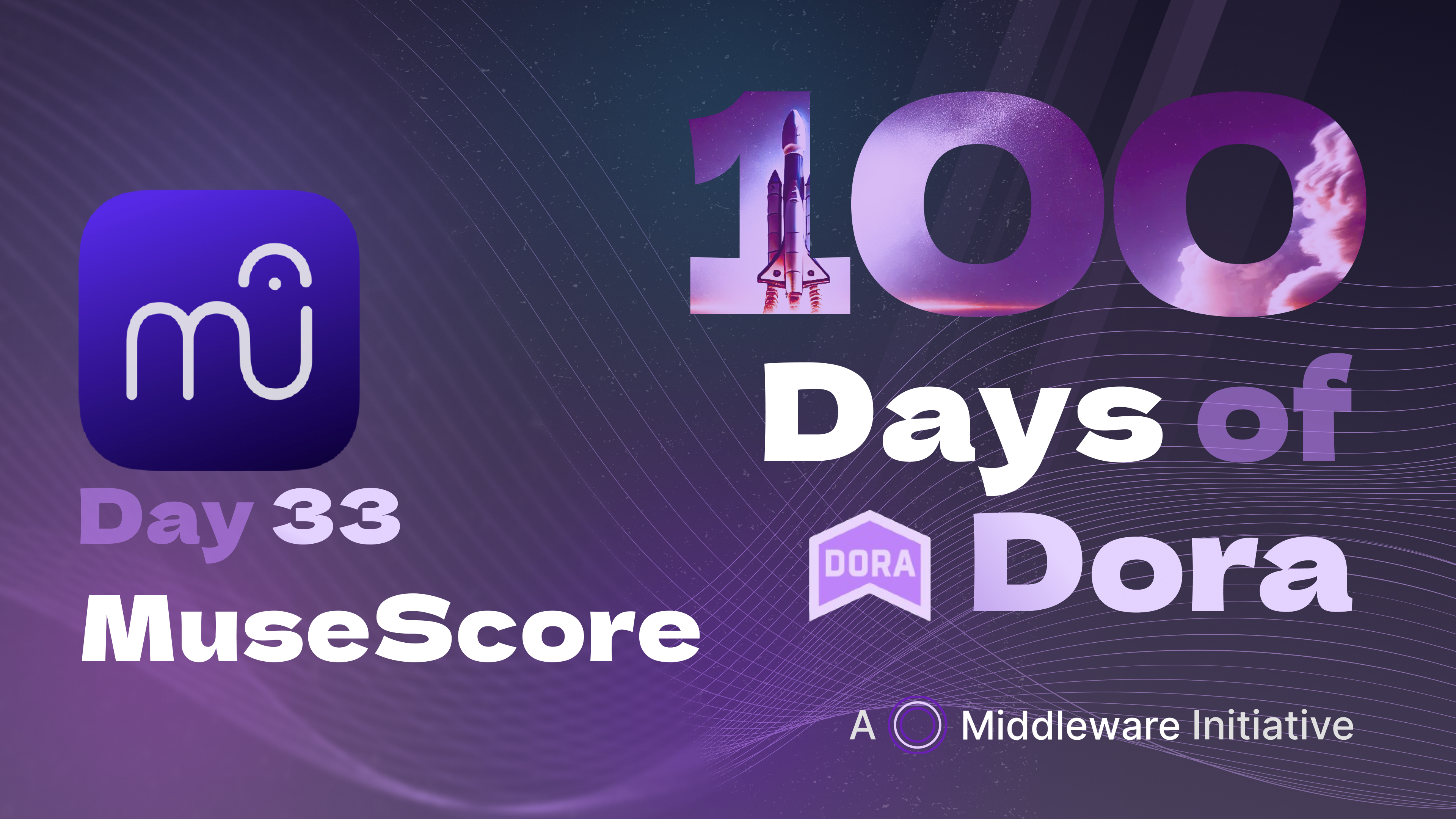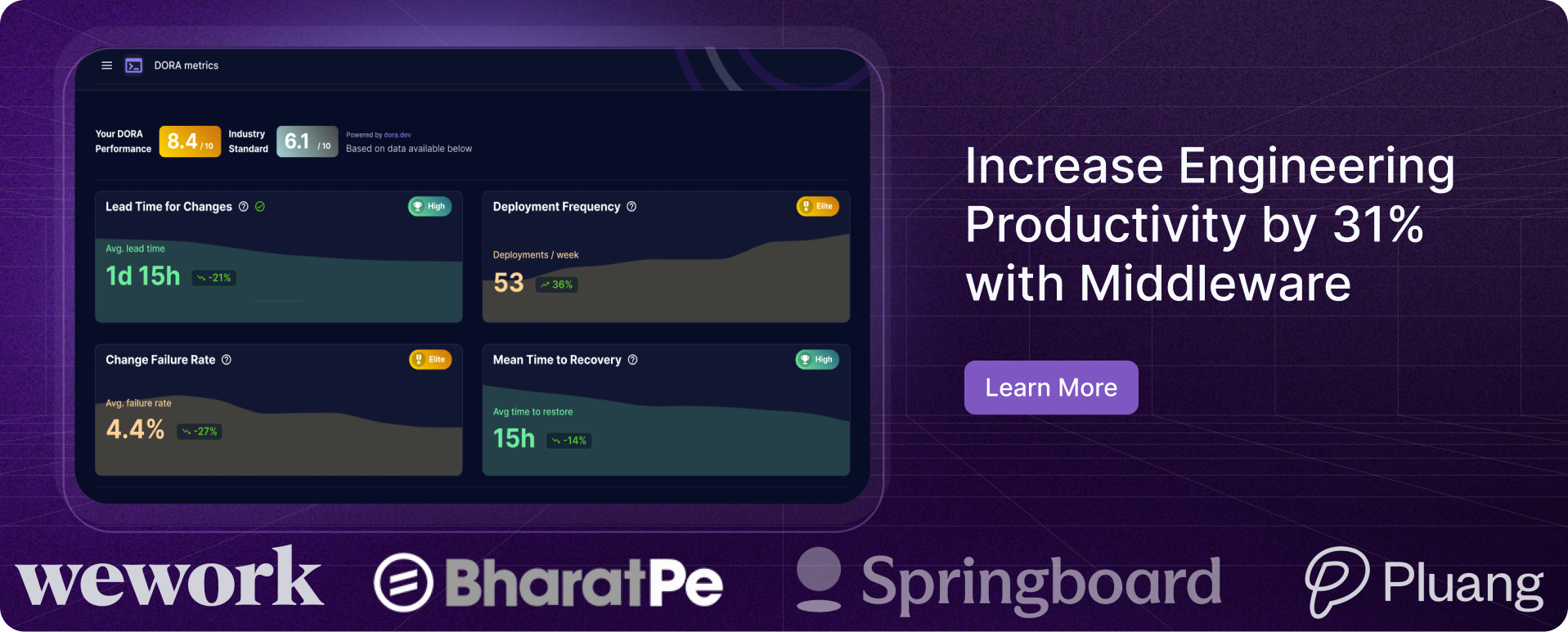MuseScore Dora Metrics: Impressive Deployments, but Rework Could Use a Midas Touch
 Rajni Rethesh
Rajni RetheshTable of contents
- MuseScore: What They’re Working On and Why Their Cycle Time Needs Some TLC
- MuseScore's Deployment Frequency: Off the Charts!
- Capitalizing on Strengths for Greater Impact
- Areas that Need Improvement
- MuseScore Dora Metrics: Impressive Deployments, but Rework Could Use a Midas Touch
- Did you know?
- Further Resources

When it comes to creating music, we all know that inspiration can strike at any moment. You might be sitting at a coffee shop, humming a catchy tune, or daydreaming during a meeting, and suddenly, a masterpiece pops into your head. But what happens next? That’s where MuseScore swoops in like a blessing!
This powerful, user-friendly music notation software helps turn those fleeting musical ideas into beautifully crafted sheet music.
In this case study, we’ll explore MuseScore’s Repo, the processes behind the scenes that keep everything running smoothly, ensuring that creating music remains fun and accessible for everyone. So, as you enjoy some music, let me dive into the fascinating world of MuseScore and its engineering marvels!
Middleware OSS was our trusted partner in this journey of exploring the Dora Metrics of MuseScore.
Also read: What are Dora Metrics?
MuseScore: What They’re Working On and Why Their Cycle Time Needs Some TLC
MuseScore has a tight-knit crew of around 377 contributors who are all about making the platform better. Their repository spends around 50% on code fixes. They also spend around 35% of their resources on feature pushes.
Contributors like Casper Jeukendrup and Jojo-Schmitz are leading the charge with their active input. However, some recent PRs, like 23654 and 23656, have had a lot of rework, which suggests there’s still room to boost the quality of new submissions right from the start.
While a fair amount of rework and less-than-stellar first response and merge times caused their cycle time to dip slightly, there’s no cause for concern—it still comfortably sits within the benchmarks established by the 2023 State of DevOps Report.
MuseScore's Deployment Frequency: Off the Charts!
However, they absolutely knocked it out of the park with their impressive deployment. 183 in July, 223 in August, and 201 in September.
These numbers far surpass the benchmark of 50 deployments per month, highlighting the team's impressive efficiency in consistently rolling out updates. Well-structured CI/CD processes make this high frequency possible, facilitating rapid and reliable releases.
Also read: How to Leverage DORA Metrics to Optimize Your CI/CD Pipeline
Capitalizing on Strengths for Greater Impact
A structured Continuous Integration and Continuous Deployment (CI/CD) process is a significant asset for MuseScore, providing a solid foundation to streamline their development workflow. Here’s how they can leverage this strength to their advantage:
Automated Testing and Quality Assurance: With a structured CI/CD process, MuseScore can implement automated testing at various stages of development. Automated tests can catch bugs and issues early in the coding process, reducing the amount of rework needed later. This proactive approach not only improves code quality but also shortens the time taken to get features and fixes into production.
Faster Feedback Loops: By integrating CI/CD practices, contributors receive immediate feedback on their code changes. This rapid feedback loop will allow them to address issues or make improvements on the spot, leading to shorter cycle times. When contributors see the results of their work quickly, they’re more likely to stay engaged and motivated.
Data-Driven Insights: A structured CI/CD pipeline can generate valuable data about the development process. By analyzing metrics such as deployment frequency, failure rates, and response times, MuseScore can identify areas for improvement. This data-driven approach can help inform decisions that enhance the overall efficiency and effectiveness of the development workflow.
Also read: Leveraging Data-Driven Decision Making in Engineering Management
Areas that Need Improvement
Expanding Their Contributor Base: To enhance their engineering workflow, the team should actively encourage more developers to join the community. One effective approach could be to conduct mentorship programs, pairing experienced contributors with newcomers. This not only helps newcomers acclimate faster but also fosters a sense of belonging and collaboration. By bringing in fresh talent and diverse perspectives, the community can boost innovation and creativity, leading to a more robust and efficient development process. Also, hosting workshops and hackathons can further engage potential contributors, showcasing the project's impact and inviting them to contribute their skills.
Greater Emphasis on Documentation: At present, only 10% of their resources are allocated to documentation. The team should prioritize enhancing their documentation efforts over merely pushing out new features. By investing more time in creating comprehensive, clear, and user-friendly documentation, they can improve onboarding for new contributors and ensure that existing users fully understand how to utilize the platform's capabilities. This focus will ultimately lead to a more efficient workflow and a better user experience.
Also read: Ideal Software Delivery Pipeline: A Three.js Dora Metrics case study
MuseScore Dora Metrics: Impressive Deployments, but Rework Could Use a Midas Touch
MuseScore's Dora metrics highlight an impressive deployment frequency that speaks volumes about the team's efficiency and dedication. With a consistent flow of updates and improvements, they have showcased their ability to deliver features and fixes swiftly, keeping users engaged and satisfied. This high deployment frequency reflects their well-structured CI/CD processes, enabling them to roll out enhancements at a rapid pace.
However, the flip side of this efficiency is the noticeable amount of rework indicated in their metrics. While rapid deployments are essential, the presence of frequent rework suggests that there might be issues with the quality of initial submissions or communication within the team. Addressing these concerns is crucial for MuseScore's continued success. By focusing on improving documentation, streamlining processes, and enhancing initial code quality, they can reduce rework and create a more seamless workflow.
If you find these learnings interesting, we’d really encourage you to give a shot at Dora metrics using Middleware Open Source. You could follow this guide to analyze your team or write to our team at productivity@middlewarehq.com with your questions and we’ll be happy to generate a suggestion study for your repo — free!
Did you know?
MuseScore is available on various platforms, including Windows, macOS, and Linux, and also has a mobile app for iOS and Android, ensuring musicians can compose and edit their music anytime, anywhere.
Further Resources
Subscribe to my newsletter
Read articles from Rajni Rethesh directly inside your inbox. Subscribe to the newsletter, and don't miss out.
Written by

Rajni Rethesh
Rajni Rethesh
I'm a senior technical content writer with a knack for writing just about anything, but right now, I'm all about technical writing. I've been cranking out IT articles for the past decade, so I know my stuff. When I'm not geeking out over tech, you can catch me turning everyday folks into fictional characters or getting lost in a good book in my little fantasy bubble.
